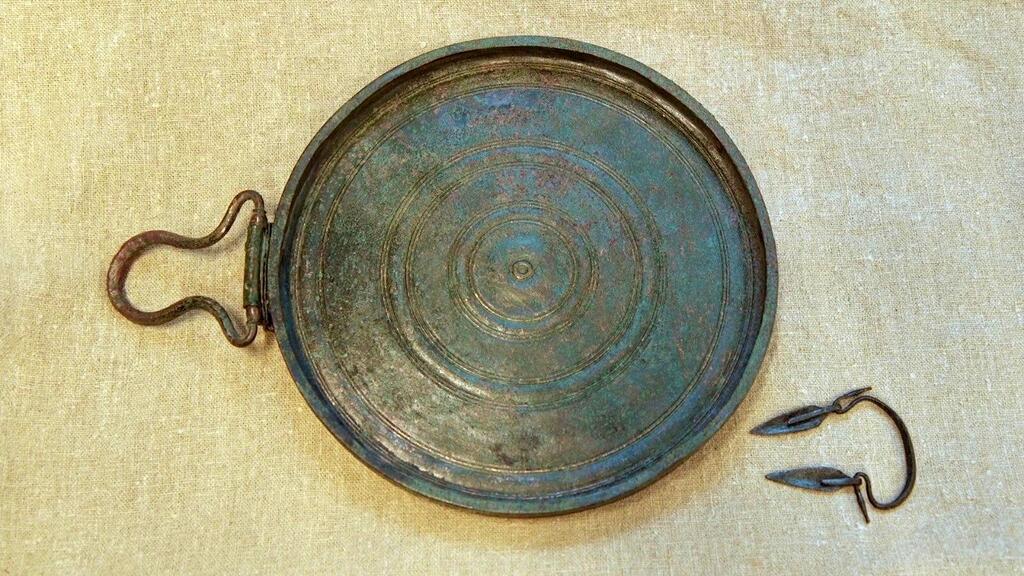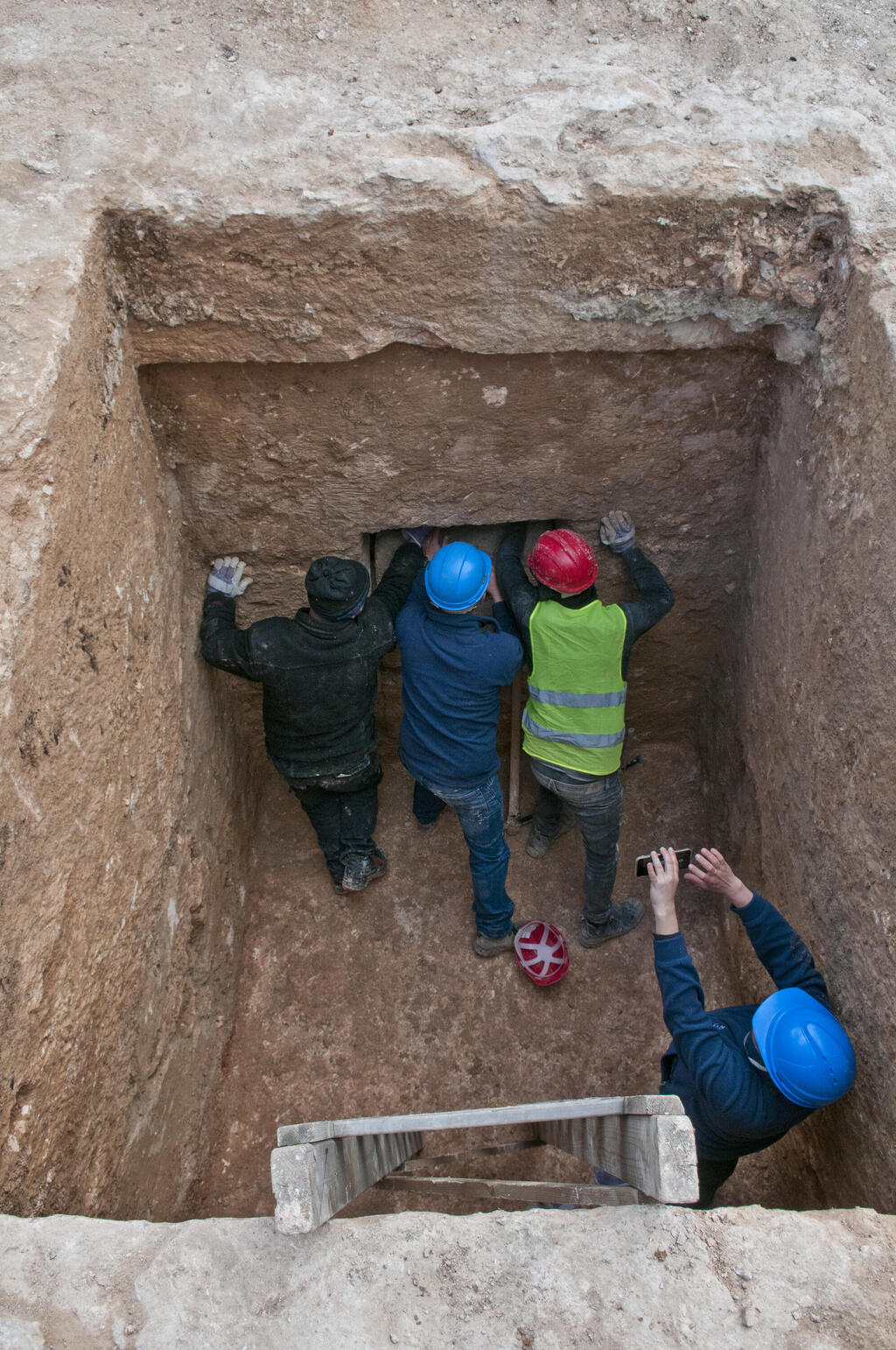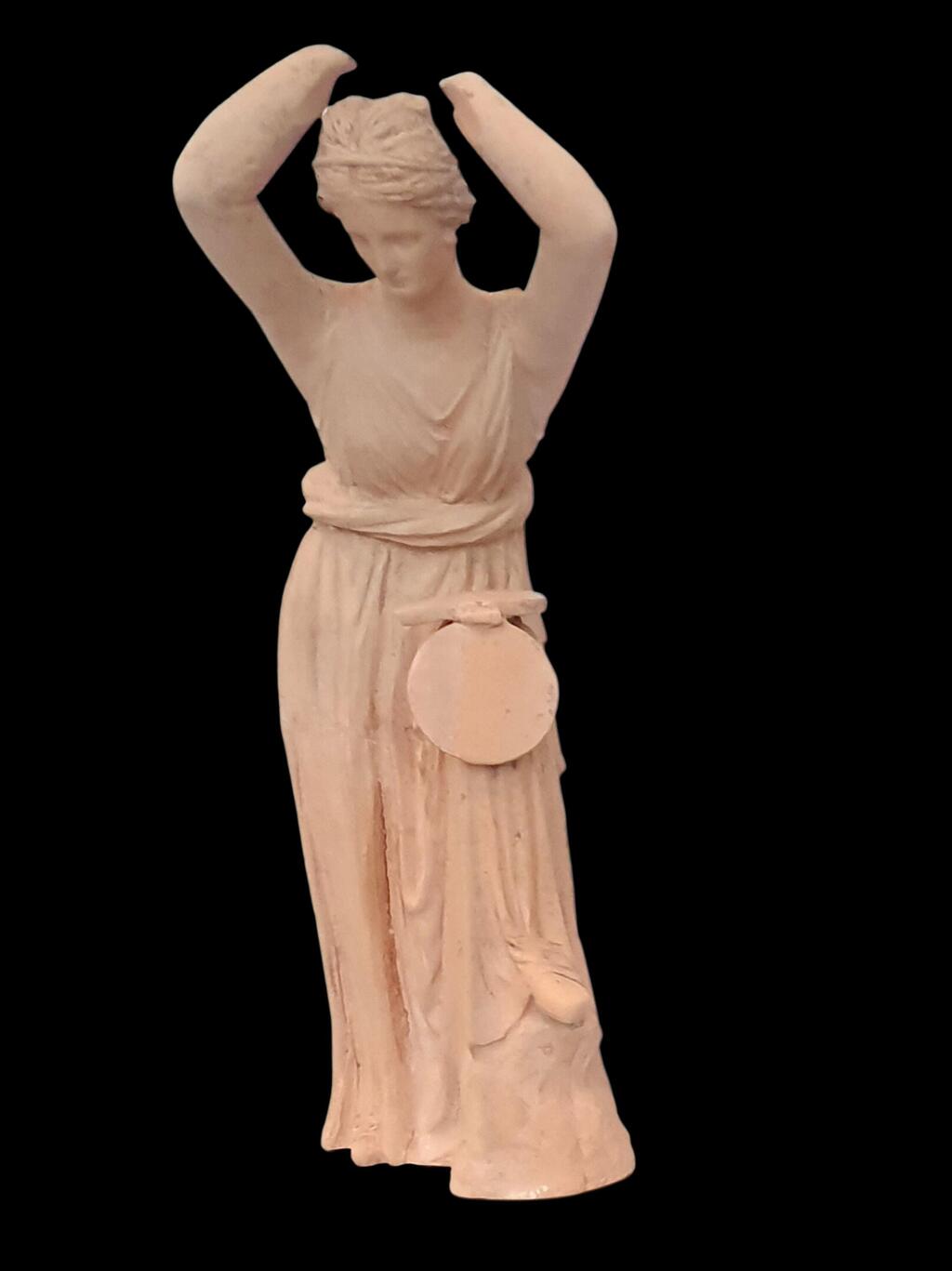Getting your Trinity Audio player ready...
Excavations carried out in Jerusalem by the Israel Antiquities Authority (IAA) recently uncovered a burial cave belonging to a woman who accompanied the Greek armies that arrived in Israel during the 4th and 3rd centuries BCE. The IAA’s team found her burned remains as well as an amazingly well-preserved bronze mirror.
More stories:
Dr. Yossi Nagar, an anthropologist in the IAA, identified the remains of bone found in the tomb as belonging to a female.
Dr. Guy Stiebel from Tel Aviv University’s Archaeology Department said the find marks “the earliest evidence of cremation in the region, dating back to the Hellenistic period.” Alongside the bones, the researchers found several bent iron nails and to their surprise, they also uncovered a folded bronze mirror that was a burial offering.
"This is the second mirror of its kind found in Israel to date, and overall, there are 63 known mirrors of this type from the Hellenistic period worldwide," said Liat Oz, an excavation director at the IAA. "The level of craftsmanship of this mirror is so high that it remained exceptionally well-preserved.”
In a joint study between Tel Aviv University and the IAA, researchers believe that this rare mirror belonged to a woman buried at a young age, possibly serving as the companion or escort of a high-ranking Hellenistic military or government officials during their journey to Israel known as hetaerae.
Researchers noted that such mirrors found folded in graves and sanctuaries, are known from the Greco-Hellenistic world and are a distinct marker associated with women in ancient Greece. These mirrors were often adorned with intricate engravings of female figures, particularly that of Aphrodite, the Greek goddess of love.
"This discovery raises the question of why a Greek woman was buried on a road leading to Jerusalem and away from any Greek settlement in the area. The burial site particularly intrigued us, especially given that archaeological information about Jerusalem and its surroundings during the early Hellenistic period is almost non-existent," Stiebel said.
The researchers believe that the woman whose remains were uncovered was likely a companion or courtesan (hetaera) rather than a married woman. Married women in Greece typically remained at home, managed the household, and raised children, and did not accompany their husbands on campaigns.
"Bronze mirrors like the one found were considered valuable items, and they could have come into the possession of Greek women in two ways: as part of their dowry before marriage or as gifts given by men to hetaerae (companions or courtesans). Such mirrors symbolized the intimate relationships they had,” the researchers said.
“Hetaerae were a part of the Greek social institution, where women, similar to geishas in Japan, provided social companionship services, that didn’t have to include sex. Some became famous among the elites of the Hellenistic world. They kept literary salons and served as muses posting for the most famous sculptures and paintings which were even displayed in temples,” the researchers said.
"It’s reasonable to assume that this is the tomb of a Greek woman who had affiliations with high-ranking Hellenistic military and governmental figures during the time of Alexander the Great's expeditions or, more likely, during the Wars of the Diadochi. This is an example of archaeology and research at its best," said Eli Eskozido, director of the Israel Antiquities Authority.
"Research on what seems like a simple artifact brings us new information, opening a window to the ancient world. Today, researchers are using new technologies to find new details which may help learn more about this woman and her culture.”
In future studies, researchers will focus on pinpointing the exact place the mirror was produced in, hoping to shed light on the woman’s background and the figures she accompanied.




